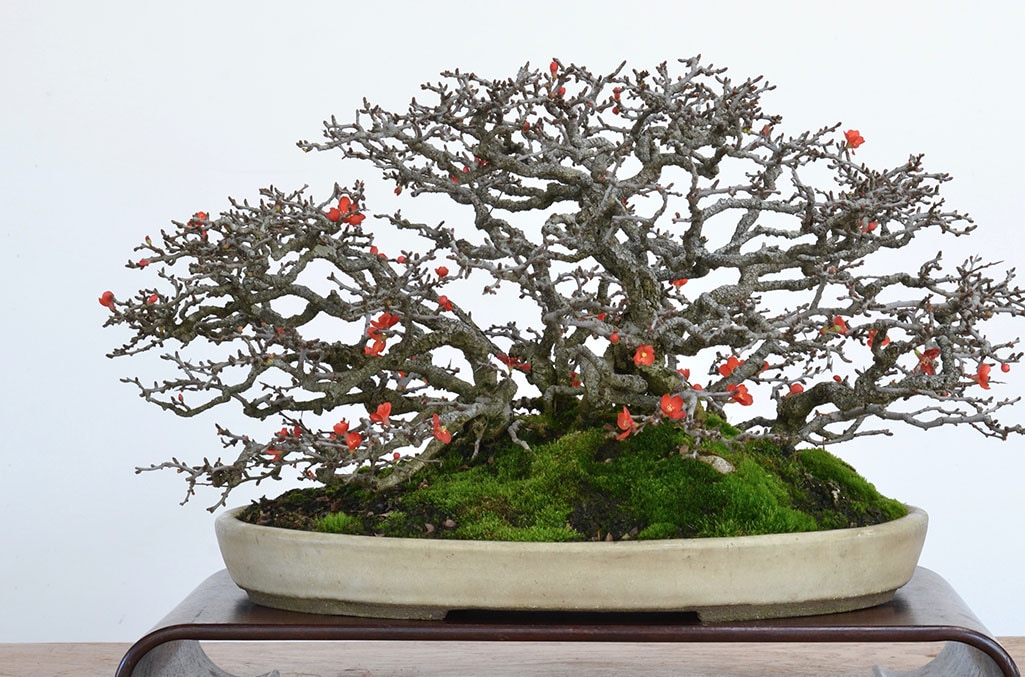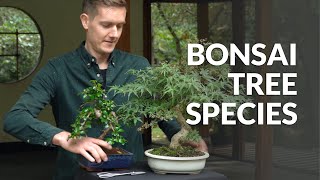Chojubai Bonsai Care guidelines
Select a sunny location for your Chaenomeles, ensuring it receives lots of sunlight to promote flowering and fruiting. Position the bonsai in a spot with good airflow to prevent fungal diseases, and protect it from strong winds and temperature extremes. Maintain temperatures between 50°F to 75°F (10°C to 24°C) to support healthy growth and flowering, in winter it can withstand lower temperatures when dormant.
Water your Chojubai bonsai regularly, keeping the soil evenly moist but never waterlogged. Water thoroughly when the top inch of soil feels dry to the touch, adjusting watering frequency based on environmental conditions and seasonal changes. Use well-draining soil but avoid allowing the bonsai to dry out completely between waterings. Continue reading about watering Bonsai trees.
Watering
Free lecture from the Beginners CourseFeed your Chaenomeles with a balanced, water-soluble fertilizer or an organic solid fertilizer during the growing season (spring through fall) to support vigorous growth and prolific flowering. Apply the fertilizer every two to four weeks, reducing or suspending fertilization during the dormant winter months. Avoid over-fertilization, which can lead to excessive vegetative growth at the expense of flowering.
Prune your Chaenomeles regularly to shape the canopy and encourage flowering and fruiting, wait with strong pruning until later in the growth season. Remove dead, diseased, or overgrown branches with scissors, and thin out dense growth to improve airflow and sunlight penetration. Wiring can be used to refine the bonsai's structure and create graceful curves, but exercise caution to avoid damaging the delicate branches and remove the wire promptly to prevent wire scars. Continue reading about pruning Bonsai trees.
Repot your Japanese Quince bonsai every two to three years during the early spring before the onset of new growth. Use a well-draining bonsai soil mix. Prune the roots slightly to stimulate new growth. Continue reading about repotting Bonsai trees.
Propagate the Flowering Quince through cuttings, or layering for new plants. Take hardwood or semi-hardwood cuttings from healthy branches and root them in a suitable rooting medium. Consider air layering to propagate branches with desirable characteristics, promoting vigorous root development before transplanting.
Monitor your Japanese Quince for common pests such as aphids, scale insects, and spider mites, which can infest the foliage and flowers. Treat infestations promptly with insecticidal soap or horticultural oil, and maintain good hygiene practices to prevent pest outbreaks. Watch for signs of fungal diseases such as powdery mildew or leaf spot, and ensure proper airflow and sanitation to minimize the risk of infection. For more detailed information on these techniques, check out our Bonsai tree care section.

Dwarf Flowering Quince 'Chojubai' (Chaenomeles speciosa)
General information about the Flowering quince Bonsai tree
With varieties ranging from the traditional Flowering Quince to the diminutive 'Chojubai' the Chaenomeles bonsai offers a diverse range of options.
The Dwarf Flowering Quince, known as 'Chojubai' in Japanese, is a prized cultivar valued for its miniature size, prolific flowering, and intricate branching structure. The Chojubai is a favorite among bonsai enthusiasts for creating small-scale landscapes and accent plants. Follow the same care guidelines as for other Chaenomeles bonsai, ensuring regular watering, balanced fertilization, and pruning to maintain the bonsai's compact form.
If you need help identifying your tree, take a look at our Bonsai tree identification guide.





